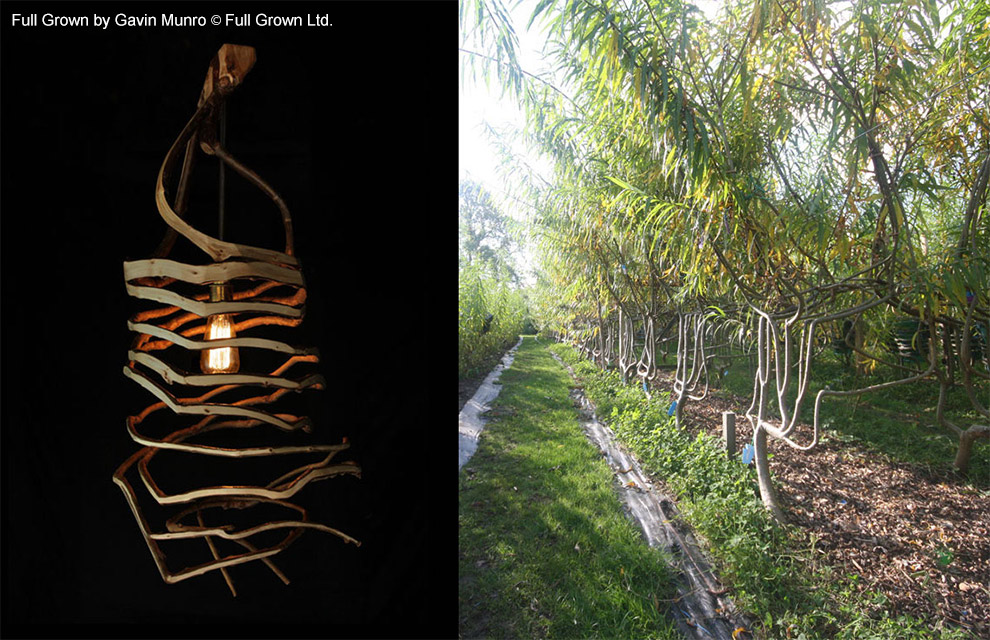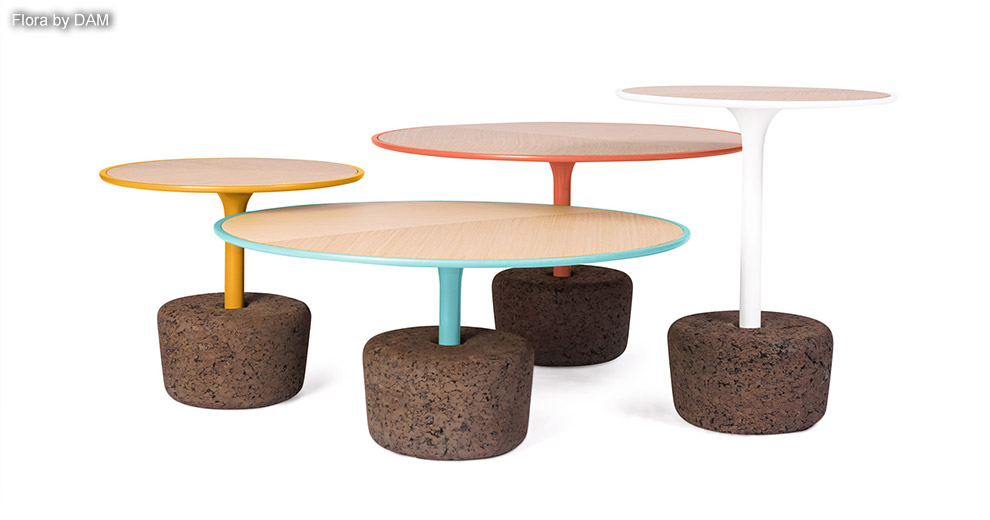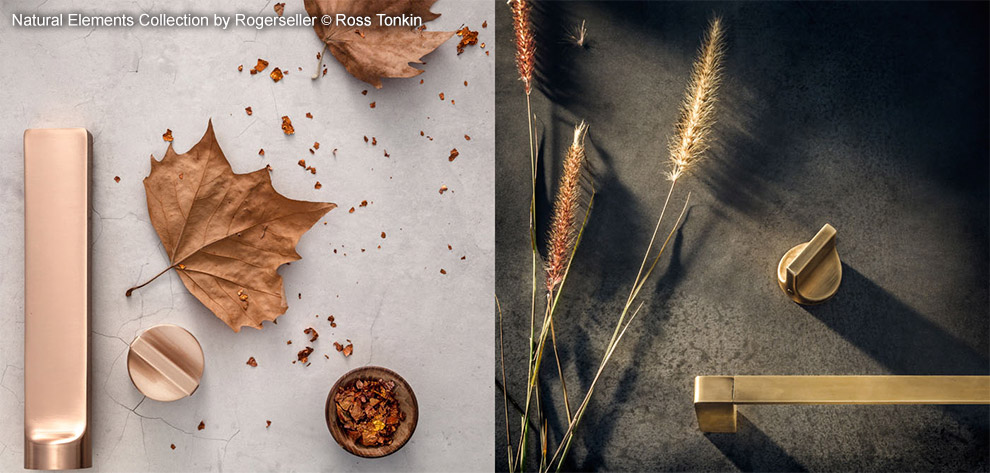What marks out this microtrend are the use and preference for natural, humble materials, sparking a new aesthetic code that elevates imperfections and the “unfinished” to new expressive and decorative heights. The roughness of surfaces, the choice of textures with a material look, deliberately irregular and “raw” finishes all put the accent on the most primitive element of design, referencing the archetypes of rural imagery. Here the connection with Nature fully embraces the colors, tactility and suggestive powers of the four primeval elements and in this sense, experimentation extends to dreaming up innovative techniques. The British designer Gavin Munro has come up with an ecological way to create incredible domestic furniture, “produced” by Mother Nature. His system consists of growing and shaping young trees using specially designed plastic molds and, by grafting and pruning, giving shape to various furnishing objects made from a single “piece” of wood.

In this way, Munro and his team have already grown a number of prototypes in a Derbyshire field, and estimate a harvest of around 400 pieces, including tables, chairs and pendant lamps next year. As the designer says: “Why would you grow trees, chop them down? Why don’t you just grow the shape you want? You can make thousands of these, but each one is unique.”Munro made several attempts before finally developing the first prototype chair, perfecting his method along the way. The process begins by training the shrubs along with the plastic formers, using small clips to position the branches. Once the desired shape is achieved, the plant is left to mature and allow its branches to thicken.

Delivery of the pre-ordered products will commence in 2017 and almost all the first pieces have already been sold. After that, the process will be repeated annually, as long as the trees maintain their growth rate. “Trees, well … they grow slow,” said Munro. Conceived by Berlin-based Israeli designer Tal Engel, Otaku (which means “your home” in Japanese) revisits the typical standard bathtub by using wood, rather than the usual ceramic, as the construction material. Drawing inspiration from the centuries’ old Asian artisan manufacturing techniques, used to produce great woven bamboo baskets for water-based travel, Engel produced Engel by weaving strips of maple-veneered white ash. Steam was then used to make the wood soft enough to bend. Once dry, the wood was given several coats of resin to make it more robust, long-lasting and impermeable. The tub – which weighs less than 15 kg – was then mounted on a steel frame.

Quite apart from creating an interesting “reverse” analogy between a bathtub and a boat – once filled with water, the interior of the tub becomes the exterior of the boat and vice versa – it also generates a pleasing and tranquil correlation between relaxing in a tub and allowing oneself to be carried away by a gentle wind in the sails. Gifting a plant is an act of kindness. Taking care of a plant we have been given is an act of love. Add to this the conviviality of a cup of coffee enjoyed with friends and perfection is well nigh achieved. The Flora series of coffee tables, designed by the Portuguese designers Hugo Silva and Joana Santona of DAM, refers to the act of offering plants to those we love and taking care of them. The tables harness design and craftsmanship to blend the materials naturally in order to create four pieces of furniture of different size and scale, which come in six different colors.

The base of each table is made of black agglomerated cork, while the top is made of oak wood veneer. The contrast between the rough appearance of the lower part, which represents the soil, and the smooth finish of the upper part, which represents the leaves, is cleverly played out through a harmony of opposites. The basic concept behind the experimental design by Ernesto Iadevaia and Lorenzo De Rosa, of the Sovrappensiero Design Studio, goes much further than the immediate play of words between Furniture and Nature, from which FurNature, the name of this collection, derives. Here we have the redefinition of a piece of furniture that seeks to overcome the disconnect between its design stages, its creation and production process, its distribution and finally its use, in a bid to integrate local and global elements into the finished product. The objects in the FurNature series turn people from simple purchasers into the “re-creators” of their specific functions.

Five simple “incomplete” and aesthetically anonymous pieces (the first prototypes of the collection presented during Design Week 2016) – a side table, a coat rack, a towel rail, an hourglass and a vase/press – lend themselves to being reworked and integrated with elements that are both natural and extraneous to the original object, chosen by the purchaser as dictated by their own taste, their own needs and their own links with the territory, thus creating a “duality” that alters the object intrinsically as regards its relationship with its user. Branches, rocks, sand, and plants typical of the local area are grafted onto minimal components produced on a global scale and reproducible anywhere, invariably creating unique objects, setting up a singular connection with the culture and geographical specificities of those who use and own them.

Inspired by the hues of Nature and the real world, Rogerseller’s range of Natural Elements taps and accessories reproduces the structure and tones of the raw materials. The new finishes, Graphite, Rose Copper and Burnished Brass (which range from the coldest and most industrial to the warmest and earthiest of tones) offer designers the perfect complement to materials such as stone and wood, combined to create lush environments that are pleasing to the touch. The range, which brings to mind the warmth of sun-ripened wheat, the cool composure of a steely sky and the rich glow of autumn leaves, reflects the belief that a natural and peaceful environment can promote health and relaxation.
For more innovative design solutions, you are welcome to follow Archi-living.com on social media.
Solid Wood Furniture – a Timeless Quality and Style – Find Out More
Design Photo Story – Salone del Mobile.Milano Through the Years – Have a Look
